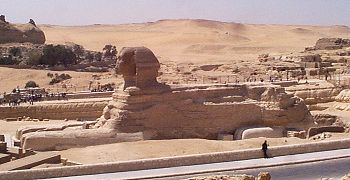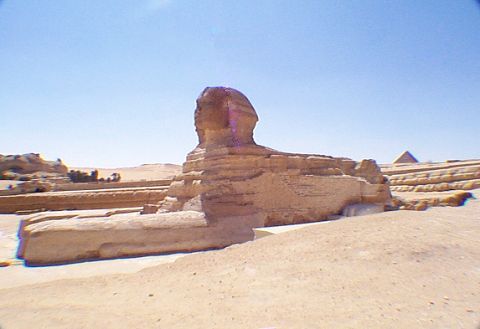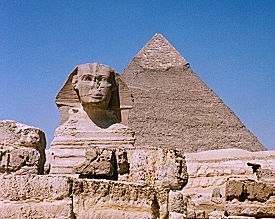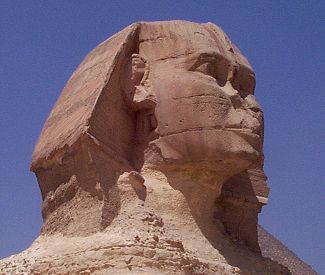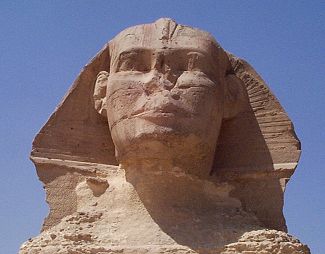
Guardian of the Horizon |
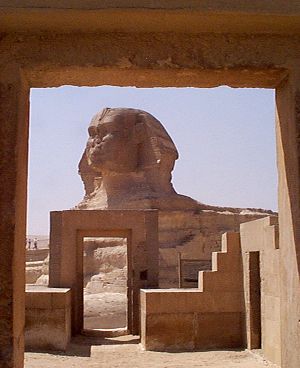 |
| The Sphinx of Giza is a symbol that has represented the essence
of Egypt for thousands of years. Even with all of the pictures that we see of the Sphinx,
nothing can really prepare you for the time that you finally see the Sphinx with your own
eyes. Here's a look at the Sphinx that will give you a hint of what you can expect to see
if you visit Egypt.
|

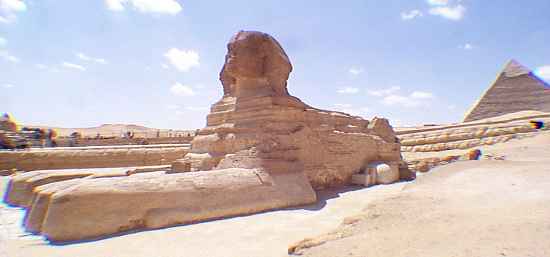
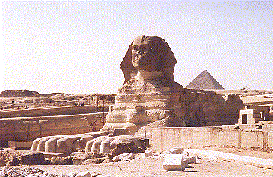
The most popular and current theory of the builder of the Sphinx holds
that it was commissioned by the 4th Dynasty King, Khafre
(2558-2532 BCE). Khafre was one of the sons of
Khufu (AKA Cheops). The Sphinx lines
up with the Pyramid
of Khafre at the foot of its causeway. As one rounds the northeast
corner to the front of the Sphinx, the alignment of the two structures becomes more
apparent.
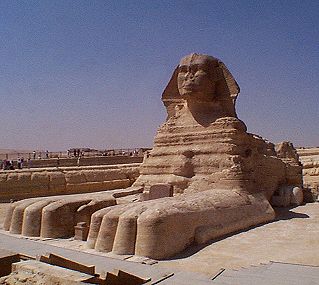 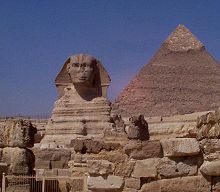

Rounding the southeast corner
Interestingly, to some, the features of the face of the Sphinx bear a far
more striking resemblance to an older brother of Khafre, the Pharaoh Djedefre (AKA
Radjedef). Djedefre's short lived reign occurred just prior to the reign of Khafre. Unlike
Khafre, Khafre's father and later Khafre's brother Menkaure, Djedefre did not construct his
pyramid on the Giza plateau. Instead Djedefre built his pyramid at Abu Roash where it now lies badly damaged. Some believe that
Khafre usurped the throne of Djedefre and then built his pyramid and Sphinx at Giza.
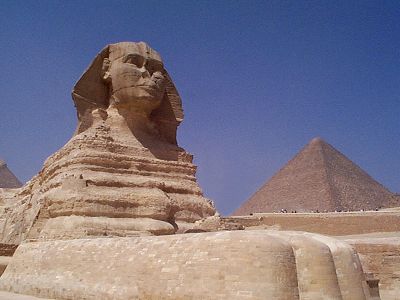
A German Egyptologist has even suggested
that the Sphinx was built by the father of Khafre, King Khufu, who was also
the builder of the Great
Pyramid.
YOU DECIDE who you think more resembles the Sphinx?
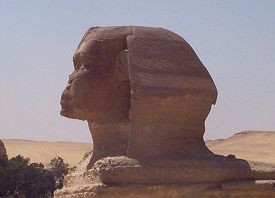
Here are some other pictures of the face of the
Sphinx:
|

The back right paw and tail
|
Recently, the Sphinx has undergone a major restoration
effort, done solely by Egyptians. Here is how the back right paw appears after this fine
work. The top of the paw was purposely left unfinished, which demonstrates the difference
between the original rock and the quality of the restoration. Also notice the tail of the
Sphinx which wraps around this right side. |
| The left or North side of the Sphinx was restored last, and
here is how the left paw appears now. Notice how carved bricks were use to perform the
restoration. These were hand cut and carefully fitted into place by modern day Egyptian
craftsmen and rock cutters. You can read more about this
restoration HERE.
Read about the entire History of the Conservation of the Sphinx from
ancient times HERE. |

The back left paw
|
| In between the paws of the Sphinx is a stela, now
called the "Dream Stela", which is inscribed with a story. The 18th Dynasty
story tells of the time that Thutmosis IV fell asleep under the Sphinx which was covered
to the neck in sand. Thutmosis had a dream that the Sphinx spoke to him and promised that
if he would free the Sphinx from the sand, Thutmosis would be destined to become king of
Egypt. |
 |
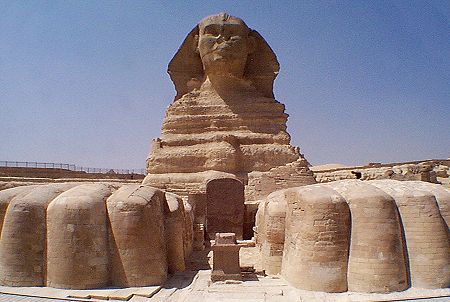
Prior to the 1905 clearing of the Sphinx, the
Sphinx has been buried by the desert sand and cleared several other times throughout
history. 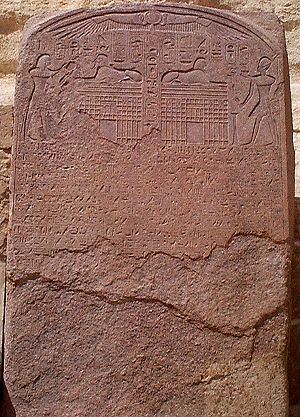 |
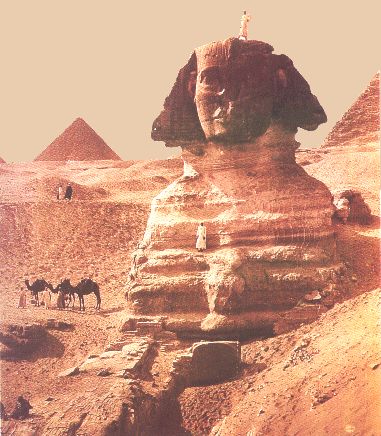
During the 18th Dynasty, Thutmosis IV probably did clear the Sphinx at that time.
But it is more likely that the story about the dream was created for political purposes,
an ancient propaganda story to help prove the legitimacy of the king. This type of story
could support the validity of a kingship, asserting and assuring the power of the pharaoh
as designated by the gods, or in this case, the Sphinx itself.
|


Return
to Guardian's Egypt - Main Gate
CLICK HERE to
get to Guardian's CyberJourney To Egypt
Guardian@guardians.net
 Click here to
send feedback or suggestions. Click here to
send feedback or suggestions.
You Are Visitor Number:

Guardian's Sphinx - Text and Photos Copyright © 1995-2005 Andrew Bayuk
All Rights Reserved
|





